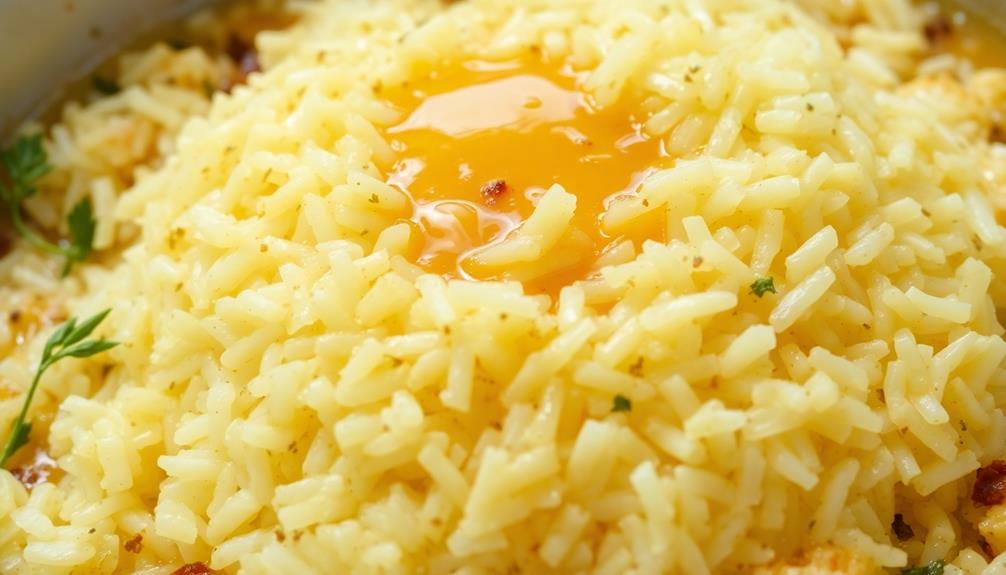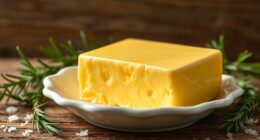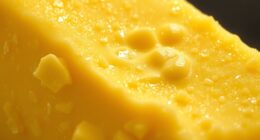Dive into the rich heritage of Turkish cuisine with the beloved butter pilaf. This simple, savory rice dish originated in the Ottoman Empire, where chefs perfected it centuries ago using golden butter as the key ingredient. As the empire expanded, the pilaf traveled with traders and diplomats, evolving regional variations. Today, it remains a cherished part of Turkish culture – a comforting, flavorful staple that highlights the creamy decadence of butter harmonized with aromatic spices. From the careful rinsing of rice to the fluffing technique, every step elevates this dish into a true culinary delight. Continue reading to uncover the secrets behind crafting the ultimate Turkish butter pilaf.
Key Takeaways
- Turkish Butter Pilaf is a cherished part of Turkish culinary heritage, with origins tracing back to the Ottoman Empire's 15th-century perfection of rice cooked in butter.
- The dish features a simple yet flavorful preparation that combines long-grain rice, aromatic spices, and rich, creamy butter to create a comforting and satisfying staple.
- Proper technique, such as rinsing the rice thoroughly and allowing the cooked rice to rest, is crucial for achieving the dish's signature fluffy and light texture.
- The balance of buttery luxury and subtle spice complexity in Turkish Butter Pilaf offers a sensory awakening, with the fragrant aroma enhancing the overall tasting experience.
- The dish exemplifies the beauty of everyday cooking, celebrating the power of simple, quality ingredients and encouraging a slower pace to truly appreciate the meal.
History
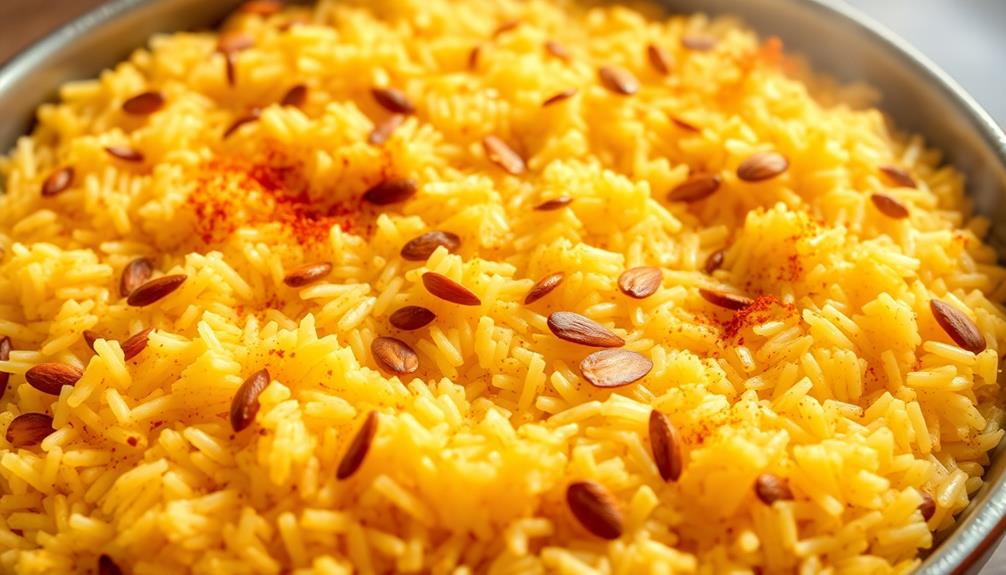
Turkish butter pilaf has a rich history rooted in the culinary traditions of the Ottoman Empire. For centuries, this beloved dish has graced the tables of palaces, cafes, and homes across the region.
Its origins can be traced back to the 15th century, when the Ottoman chefs perfected the art of cooking rice in an abundance of butter, creating a decadent and fragrant pilaf that became a hallmark of imperial cuisine.
As the Ottoman Empire expanded, so too did the popularity of Turkish butter pilaf. The dish traveled with traders, diplomats, and soldiers, spreading its delicious influence far and wide.
Each region put its own spin on the recipe, incorporating local ingredients and techniques to make it their own.
Today, Turkish butter pilaf remains a cherished part of the country's cultural heritage, a timeless classic that continues to delight and nourish generations of food lovers.
Recipe
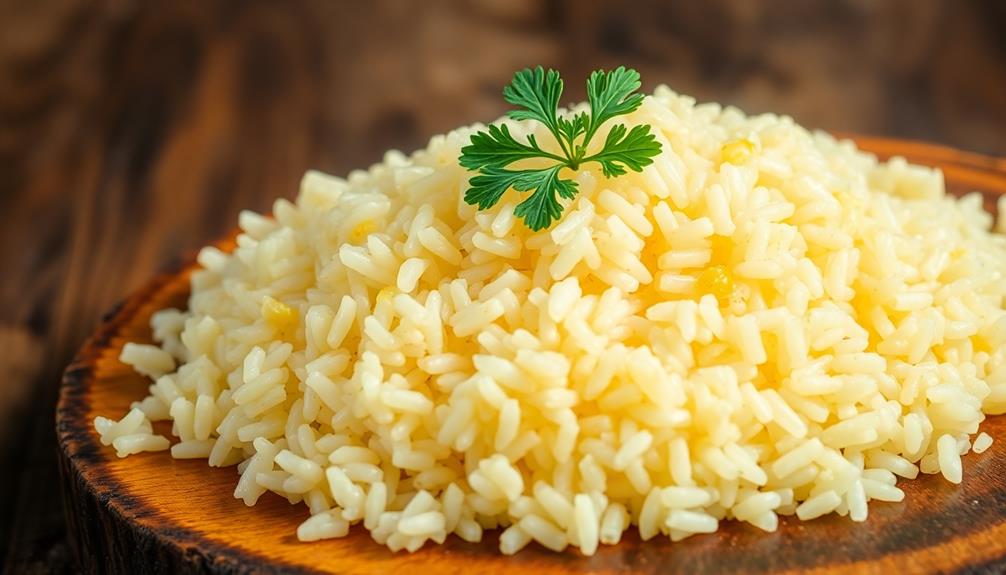
Recipe
Turkish Butter Pilaf is a comforting and flavorful rice dish that's a staple in Turkish cuisine. The key to this dish is the perfect balance of aromatic spices and the rich, creamy texture achieved by the long-grain rice and butter. The dish is often enjoyed for its simplicity and can be a nutritious option when prepared with wholesome ingredients, similar to the benefits of raw food diets which emphasize whole, unprocessed foods.
The dish is traditionally made with vermilion-colored Turkish rice, which lends a unique flavor and texture. However, you can easily substitute other long-grain rice varieties such as basmati or jasmine rice.
Ingredients:
- 2 cups long-grain rice
- 4 cups chicken or vegetable broth
- 1/2 cup unsalted butter
- 1 teaspoon cumin
- 1 teaspoon paprika
- 1/2 teaspoon ground cinnamon
- 1/2 teaspoon salt
- 1/4 teaspoon black pepper
Instructions:
In a large saucepan, melt the butter over medium heat. Add the rice and sauté for 2-3 minutes, stirring frequently, until the rice is lightly toasted.
Pour in the broth and stir in the cumin, paprika, cinnamon, salt, and pepper. Bring the mixture to a boil, then reduce the heat to low, cover, and simmer for 20-25 minutes, or until the rice is tender and the liquid is absorbed.
When cooking Turkish Butter Pilaf, it's important to use a heavy-bottomed saucepan or pot to ensure even heating and prevent the rice from burning.
Additionally, avoid lifting the lid during the simmering process, as this can release valuable steam and affect the cooking time. For a richer flavor, you can also stir in a tablespoon of butter or olive oil at the end of the cooking process.
Cooking Steps
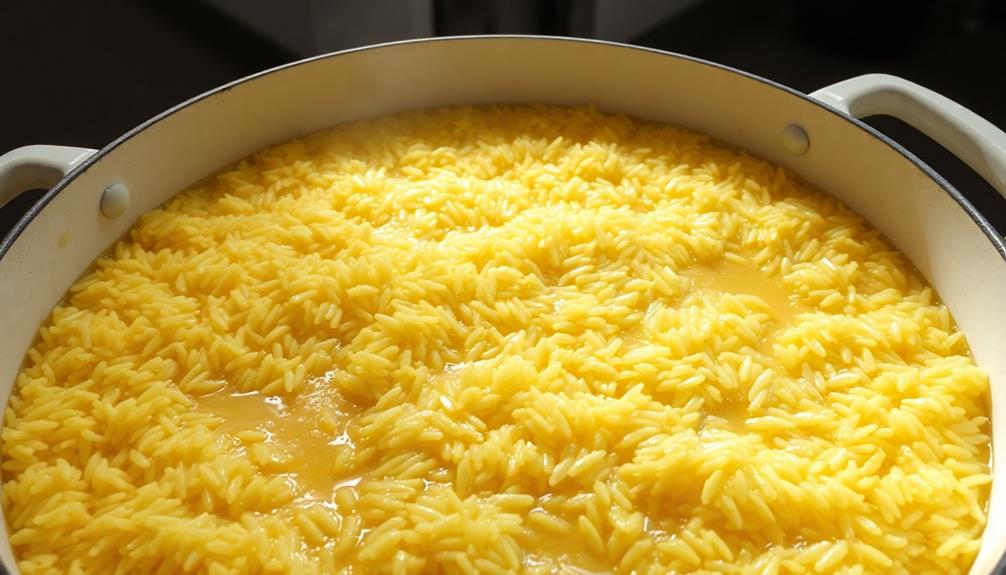
First, you'll want to rinse the rice thoroughly before cooking to remove any excess starch.
Next, melt the butter in a skillet over medium heat.
Then, add the rice and toast it, stirring frequently, until it's fragrant and golden.
After that, pour in the broth and let the mixture simmer until the rice is tender.
Step 1. Rinse Rice Thoroughly Before Cooking
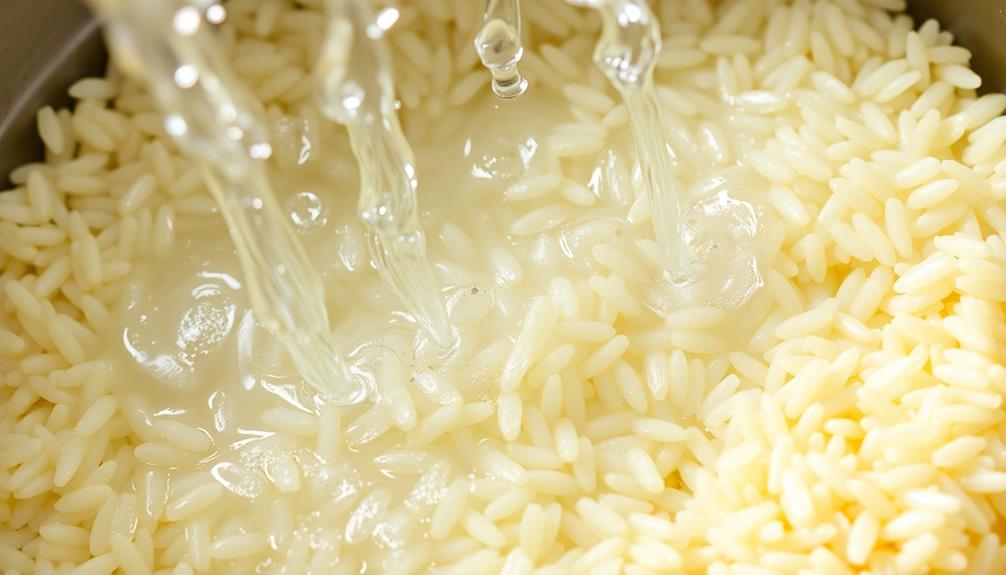
Rinsing the rice thoroughly before cooking is a crucial step in preparing the perfect Turkish butter pilaf. This simple process helps remove any impurities or excess starch, ensuring your rice cooks up fluffy, not clumpy.
Start by placing the rice in a fine-mesh strainer and rinse it under cool running water. Swish the grains around with your fingers, allowing the water to run through and carry away any debris or powdery starch. Continue rinsing until the water runs clear, usually about 1-2 minutes.
This extra step may seem tedious, but it's worth the effort – the result is a light, tender texture that's essential for an authentic Turkish butter pilaf.
Once rinsed, your rice is ready to be cooked to pilaf perfection. Don't skip this crucial preparatory stage; taking the time to rinse thoroughly will have your rice turning out beautifully every time.
Step 2. Melt Butter in a Skillet
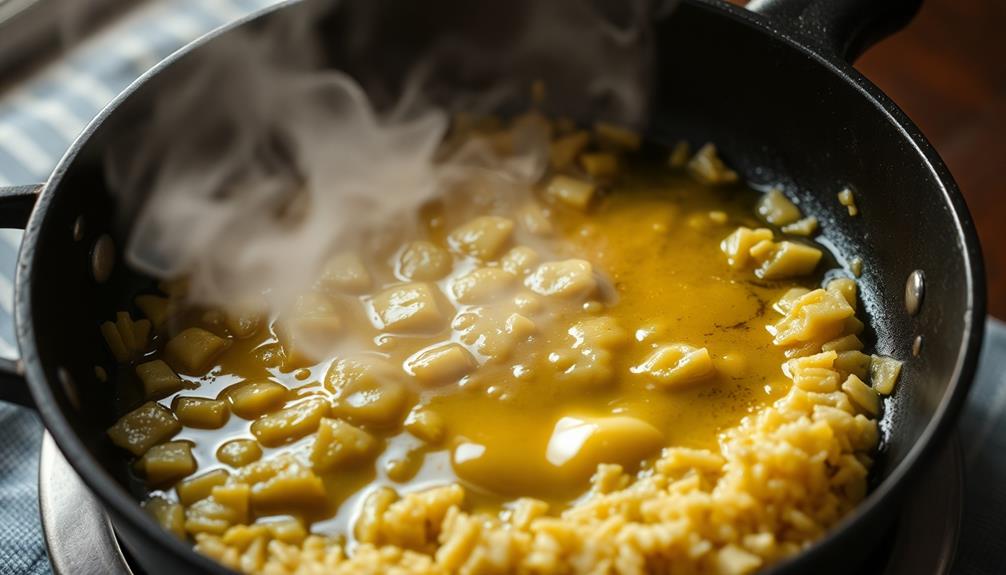
Next, melt the butter in a large skillet over medium heat.
Butter, which typically contains 80-82% fat, is perfect for creating a rich and creamy base for your dish.
Watch the butter carefully as it begins to melt, swirling the pan gently to ensure even heating.
As the butter melts, it will start to bubble and foam.
Keep a close eye on it, as the butter can quickly go from perfectly golden to burnt if you're not attentive.
Once the butter is fully melted and has a lovely, nutty aroma, remove the skillet from the heat.
This step is crucial, as you don't want the butter to burn and ruin the delicate flavor.
Take a moment to breathe in the rich, buttery scent – it's a tantalizing preview of the savory dish to come.
Butter enhances flavor and moisture with its creamy texture, making it an essential ingredient in this recipe.
With the butter melted, you're now ready to start building the layers of flavor that will make this Turkish Butter Pilaf so irresistible.
Get ready to add the fragrant spices and fluffy rice!
Step 3. Add Rice and Toast
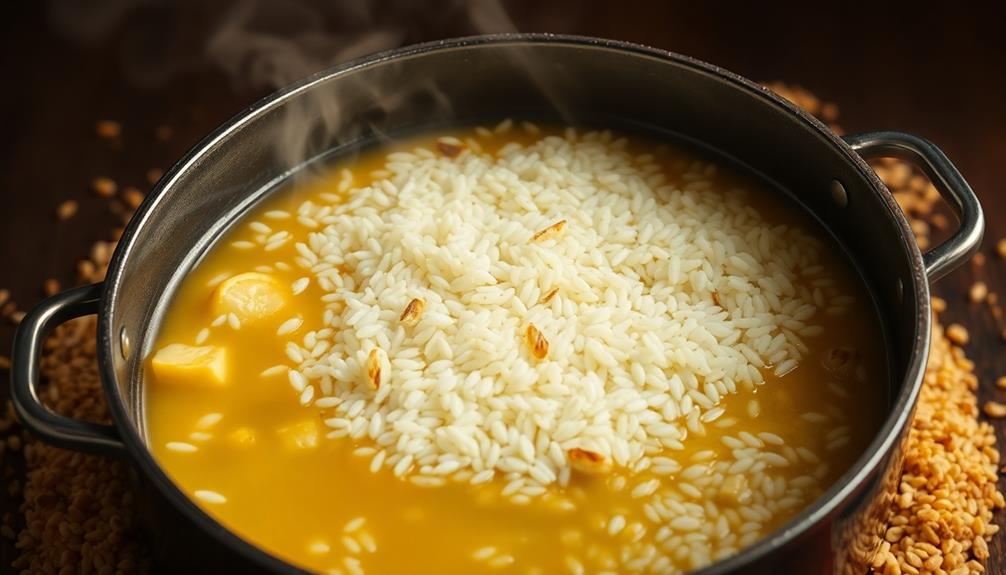
With the butter melted to perfection, it's time to add the rice and toast it. Grab your trusty spatula and gently pour the rice into the hot, fragrant butter.
As the grains hit the pan, they'll sizzle and pop, releasing an aroma that'll have your mouth watering. Stir the rice continuously, ensuring each grain gets coated in that rich, golden butter. You'll want to toast the rice for 2-3 minutes, until it turns slightly translucent and takes on a lovely nutty flavor.
Keep a close eye on it, though – you don't want the rice to burn! Once it's perfectly toasted, it's ready for the next step.
The rice should have a delightful, slightly chewy texture that contrasts beautifully with the silky butter. This simple act of toasting transforms the rice, laying the foundation for the truly special Turkish butter pilaf to come.
Get ready, because the flavors are about to intensify!
Step 4. Add Broth and Simmer

Now, grab the flavorful broth you've prepared and slowly pour it into the pan with the toasted rice. As the liquid hits the grains, you'll hear a gentle sizzle and see the rice start to swell and become plump.
For optimal cooking results, ensure your cooking environment is clean and free from distractions, just like how regular cleaning is essential for air purifiers to maintain performance.
Stir the mixture gently, ensuring every grain is coated in the aromatic broth. Bring the pan to a simmer, then cover it with a tight-fitting lid. Reduce the heat to low and let the rice cook, undisturbed, for about 15-20 minutes.
The rice will slowly absorb the broth, becoming tender and infused with deep, savory flavor. Peek under the lid occasionally to check the progress, but resist the urge to stir too much, as this can make the rice sticky.
Once the liquid has been fully absorbed and the rice is cooked through, remove the pan from the heat and let it sit, covered, for another 5 minutes. This resting period allows the grains to firm up and the flavors to meld together perfectly.
Step 5. Fluff Rice With a Fork

Fluffing the rice with a fork is the final step in perfecting this aromatic Turkish butter pilaf. Gently run the tines of the fork through the cooked rice, lifting and separating the grains. This simple technique creates a fluffy, light texture that's essential for this dish.
Don't overmix or squeeze the rice – you want to maintain its delicate, individual grains. As you fluff, you'll release the enticing aromas of the melted butter, fragrant spices, and tender vegetables. The rice should be thoroughly separated, with no clumps or stickiness remaining.
Fluff just until you achieve that perfect, cloud-like consistency. Then, transfer the light, fluffy rice to a serving dish, ready to be enjoyed. This final step ensures every bite of the Turkish butter pilaf is as light and flavorful as the first.
Treat the rice with care, and it will reward you with an authentic, mouthwatering result.
Final Thoughts
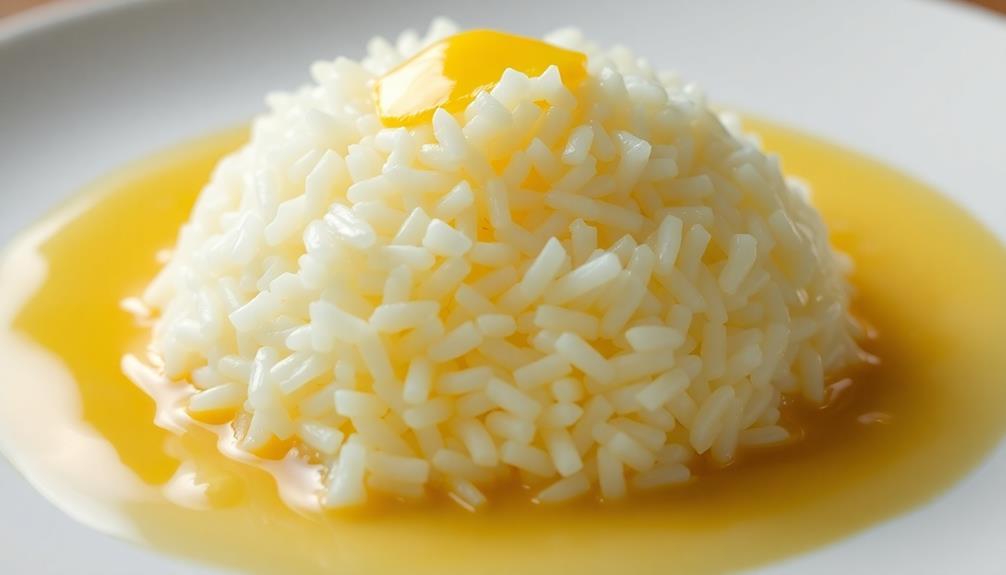
Having savored the aromatic Turkish Butter Pilaf, you can't help but appreciate the depth of flavors woven into this humble dish. The perfectly cooked rice, infused with the rich, creamy butter, is a true delight. Each bite awakens your senses, the fragrant aroma of toasted spices lingering pleasantly on your tongue.
What makes this pilaf so special is the balance it strikes – the buttery luxury offset by the subtle complexity of the seasonings, creating a harmonious symphony of tastes.
As you savor the last morsels, you can't help but feel a sense of culinary satisfaction. This is a dish that reminds you of the joys of simplicity, where humble ingredients are transformed into something truly extraordinary.
The Turkish Butter Pilaf is a testament to the power of thoughtful technique and the magic that can happen when flavors are allowed to mingle and meld. It's a dish that invites you to slow down, savor each moment, and appreciate the beauty of the everyday.
Frequently Asked Questions
What Is the Best Type of Rice for Turkish Butter Pilaf?
The best type of rice for Turkish butter pilaf is a long-grain rice like basmati or jasmine. These rices have a light, fluffy texture that's perfect for soaking up the rich, buttery flavor of the dish.
Can I Substitute Olive Oil for the Butter?
You can substitute olive oil for the butter, but the dish won't have the same rich, creamy flavor that the butter provides. The butter is essential for the traditional Turkish butter pilaf taste.
How Long Does Turkish Butter Pilaf Stay Fresh?
How long it stays fresh depends on how you store it. If you refrigerate the Turkish butter pilaf, it'll stay fresh for 3-4 days. But if you leave it out at room temperature, it'll only last 1-2 days before spoiling.
Can I Make Turkish Butter Pilaf in a Rice Cooker?
You can definitely make Turkish butter pilaf in a rice cooker. Just follow the same basic recipe, adding the rice, broth, and butter to the cooker. It'll come out perfectly cooked and full of that rich, buttery flavor.
Is Turkish Butter Pilaf Suitable for Vegetarians or Vegans?
You'll find that Turkish butter pilaf is not suitable for vegetarians or vegans, as it typically contains butter and may also include meat or meat-based broth. However, you could try a plant-based alternative using a neutral oil and vegetable broth.
